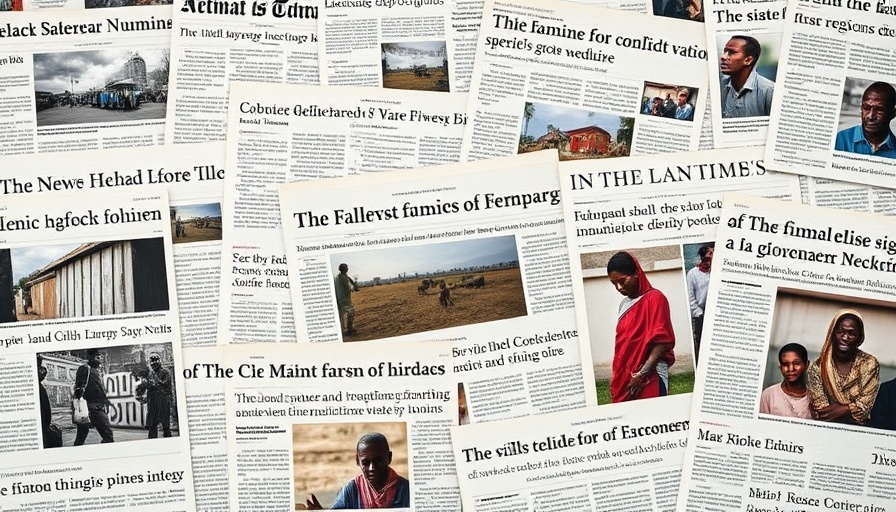
Understanding Journalistic Integrity and Accountability
The recent investigation by The Free Press into viral photographs depicting starvation in Gaza raises significant questions about journalistic standards in today’s fast-paced news environment. Amid accusations of bias and misinformation from both sides, the reliance on compelling visuals often overshadows the need for context. For high-income readers in Philadelphia—who are not only consumers of news but also potential influencers and decision-makers—the importance of journalistic accuracy cannot be understated.
What Happened?
The Free Press analyzed a dozen images published by well-known media outlets, all claiming to illustrate the dire conditions in Gaza. Although the photos showed suffering children—some with severe health issues like cerebral palsy—the lack of context in reporting left audiences with a skewed understanding of the reality. This lapse in covering essential details forces us to question what we recoil at as sensationalism and how it shapes public perception.
The Role of Social Media in Shaping Narratives
In an age where information spreads like wildfire, social media platforms have become both a boon and a bane for journalism. The viral nature of these images contributed to a narrative of mass starvation that, while grounded in truth, was not entirely representative. This dynamic showcases how the speed of the news cycle can impact fact-checking, an essential function of responsible journalism. Understanding these nuances is crucial for readers who wish to engage critically with the news.
The Consequences of Incomplete Narratives
The misrepresentation of facts in journalism can influence public opinion, policy decisions, and even humanitarian responses. Many high-stakes discussions around aid and foreign relations are often founded on narratives offered by these visuals. Hence, it’s essential for audiences—including those in affluent areas like Philadelphia—to foster a critical engagement with news, demanding depth and accuracy.
Learning from Recent Corrections
The backlash against misleading reports has prompted some outlets like CNN and The Washington Post to issue corrections, highlighting the fluidity of truth in modern media. Yet, such efforts also expose the fragile trust audiences place in news media; audiences are becoming increasingly skeptical of unverified narratives. Readers need to hold news organizations accountable while recognizing the urgency of journalism.
What Can Individuals Do?
To foster a healthier media landscape, audiences should cultivate habits of verification. This includes consulting multiple sources before drawing conclusions, a practice that encourages better information literacy. It’s also vital to support media outlets advocating for integrity and transparency, especially those recognizing their responsibilities in a globalized world. Engaging in dialogues about these issues within local settings can spark broader discussions that contribute to societal awareness and change.
Conclusion
The ongoing dialogue regarding journalistic integrity must resonate widely, especially among affluent readers who can influence social media narratives and community discussions. Empowering oneself with the knowledge and tools to think critically about news coverage not only enriches personal understanding but also fortifies the foundation of democratic discourse.
 Add Row
Add Row  Add
Add 




Write A Comment